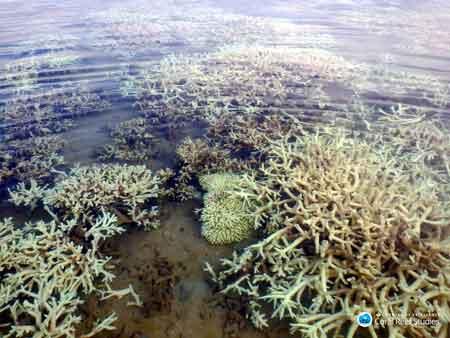

Major coral bleaching on the Great Barrier Reef has now occurred two years in a row. Can the reefs recover?
What is coral bleaching? When ocean waters warm beyond normal ranges, corals eject the photosynthetic algae that live inside them. It’s these symbiotic algae that provide the corals essential nutrients. When the algae are gone, the corals are stressed and can easily die if the temperatures stay too high.
Coral bleaching started in the 1980s as periodic events in the tropical ocean. As global ocean temperatures increase due to global worming, bleaching events have become more frequent. Now, when El Nino causes temperature spikes the effects are devastating. There have been three worldwide mass bleaching events since 1998.
The Great Barrier Reef (GBR) is the largest living structure on the planet. And, it’s about 500,000 years old. Today, coral bleaching is fundamentally changing the reef. Scientists estimate that in 2016 about 90% of 2300 kilometers (1430 miles) of the GBR suffered damage from bleaching. This year, Australian scientists found that two-thirds of the reef bleached for a second year in a row. That means there’s no time for the corals to recover. Perhaps, sections of the reef are so damaged that they can’t be saved. And even local reef protection, scientists find, doesn’t help.
Tropical coral reefs are one of the most complex ecosystems on earth. The corals and their skeletons are the foundation of that ecosystem. If they die, there are no coral reefs and the future of the ecosystem that supports so much life is threatened. Researchers conclude, “Consequently, immediate global action to curb future warming is essential to secure a future for coral reefs.” (https://www.nature.com/nature/journal/v543/n7645/full/nature21707.html)
Links to websites to read more:
To see where bleaching events are occurring now: https://coralreefwatch.noaa.gov/satellite/bleaching5km/index_5km_baa_max_r07d.php















